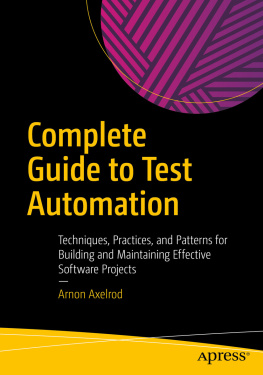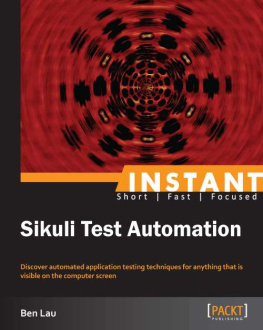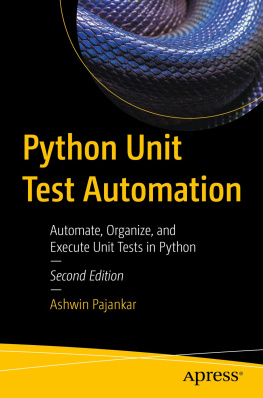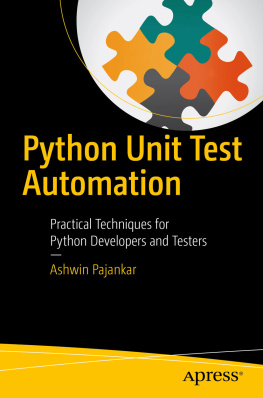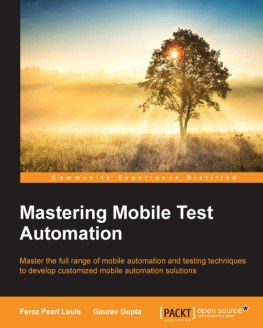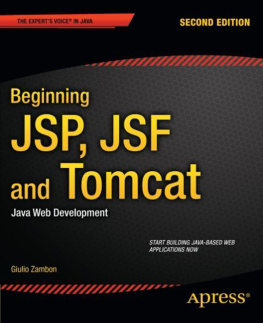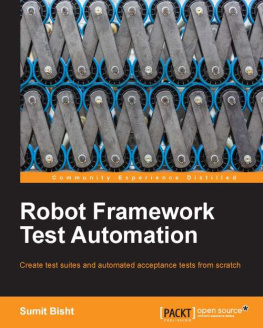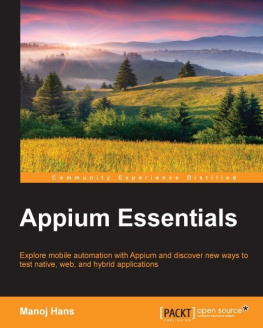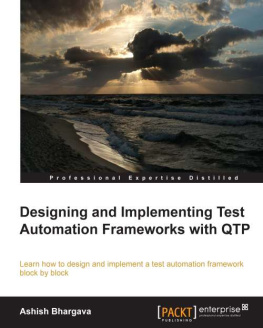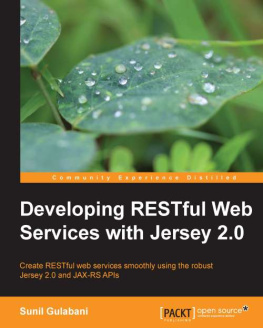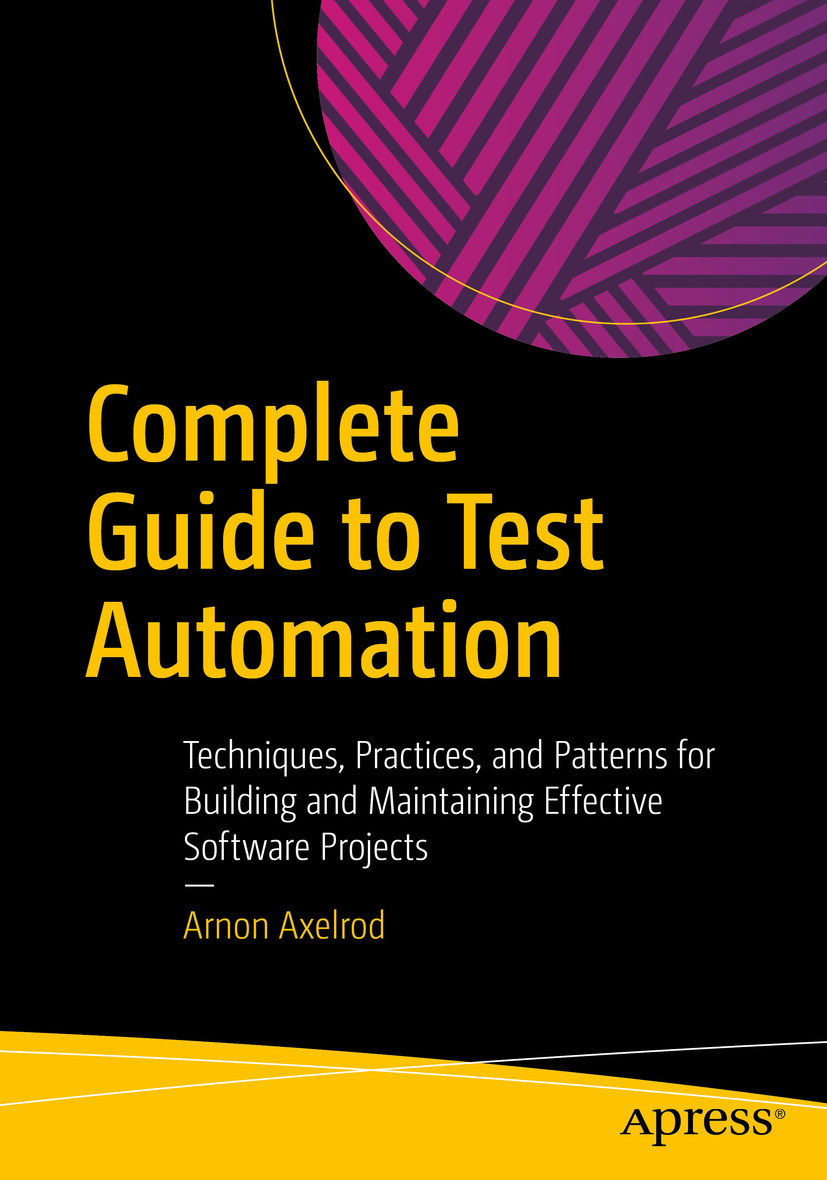Arnon Axelrod - Complete Guide to Test Automation: Techniques, Practices, and Patterns for Building and Maintaining Effective Software Projects
Here you can read online Arnon Axelrod - Complete Guide to Test Automation: Techniques, Practices, and Patterns for Building and Maintaining Effective Software Projects full text of the book (entire story) in english for free. Download pdf and epub, get meaning, cover and reviews about this ebook. year: 2018, publisher: Apress, genre: Romance novel. Description of the work, (preface) as well as reviews are available. Best literature library LitArk.com created for fans of good reading and offers a wide selection of genres:
Romance novel
Science fiction
Adventure
Detective
Science
History
Home and family
Prose
Art
Politics
Computer
Non-fiction
Religion
Business
Children
Humor
Choose a favorite category and find really read worthwhile books. Enjoy immersion in the world of imagination, feel the emotions of the characters or learn something new for yourself, make an fascinating discovery.
- Book:Complete Guide to Test Automation: Techniques, Practices, and Patterns for Building and Maintaining Effective Software Projects
- Author:
- Publisher:Apress
- Genre:
- Year:2018
- Rating:4 / 5
- Favourites:Add to favourites
- Your mark:
Complete Guide to Test Automation: Techniques, Practices, and Patterns for Building and Maintaining Effective Software Projects: summary, description and annotation
We offer to read an annotation, description, summary or preface (depends on what the author of the book "Complete Guide to Test Automation: Techniques, Practices, and Patterns for Building and Maintaining Effective Software Projects" wrote himself). If you haven't found the necessary information about the book — write in the comments, we will try to find it.
Rely on this robust and thorough guide to build and maintain successful test automation. As the software industry shifts from traditional waterfall paradigms into more agile ones, test automation becomes a highly important tool that allows your development teams to deliver software at an ever-increasing pace without compromising quality.
Even though it may seem trivial to automate the repetitive testers work, using test automation efficiently and properly is not trivial. Many test automation endeavors end up in the graveyard of software projects. There are many things that affect the value of test automation, and also its costs. This book aims to cover all of these aspects in great detail so you can make decisions to create the best test automation solution that will not only help your test automation project to succeed, but also allow the entire software project to thrive.
One of the most important details that affects the success of the test automation is how easy it is to maintain the automated tests. Complete Guide to Test Automation provides a detailed hands-on guide for writing highly maintainable test code.
What Youll Learn
Know the real value to be expected from test automation
Discover the key traits that will make your test automation project succeed
Be aware of the different considerations to take into account when planning automated tests vs. manual tests
Determine who should implement the tests and the implications of this decision
Architect the test project and fit it to the architecture of the tested application
Design and implement highly reliable automated tests
Begin gaining value from test automation earlier
Integrate test automation into the business processes of the development team
Leverage test automation to improve your organizations performance and quality, even without formal authority
Understand how different types of automated tests will fit into your testing strategy, including unit testing, load and performance testing, visual testing, and more
Who This Book Is For
Those involved with software development such as test automation leads, QA managers, test automation developers, and development managers. Some parts of the book assume hands-on experience in writing code in an object-oriented language (mainly C# or Java), although most of the content is also relevant for nonprogrammers.
Arnon Axelrod: author's other books
Who wrote Complete Guide to Test Automation: Techniques, Practices, and Patterns for Building and Maintaining Effective Software Projects? Find out the surname, the name of the author of the book and a list of all author's works by series.

